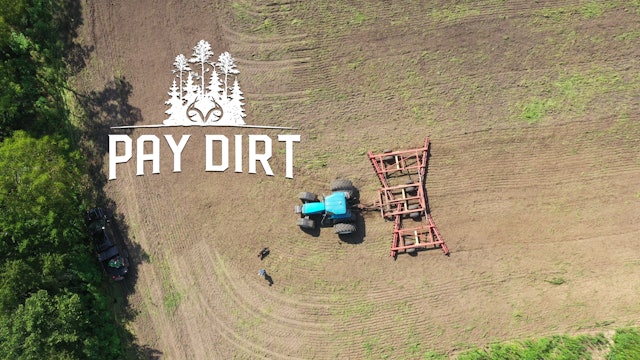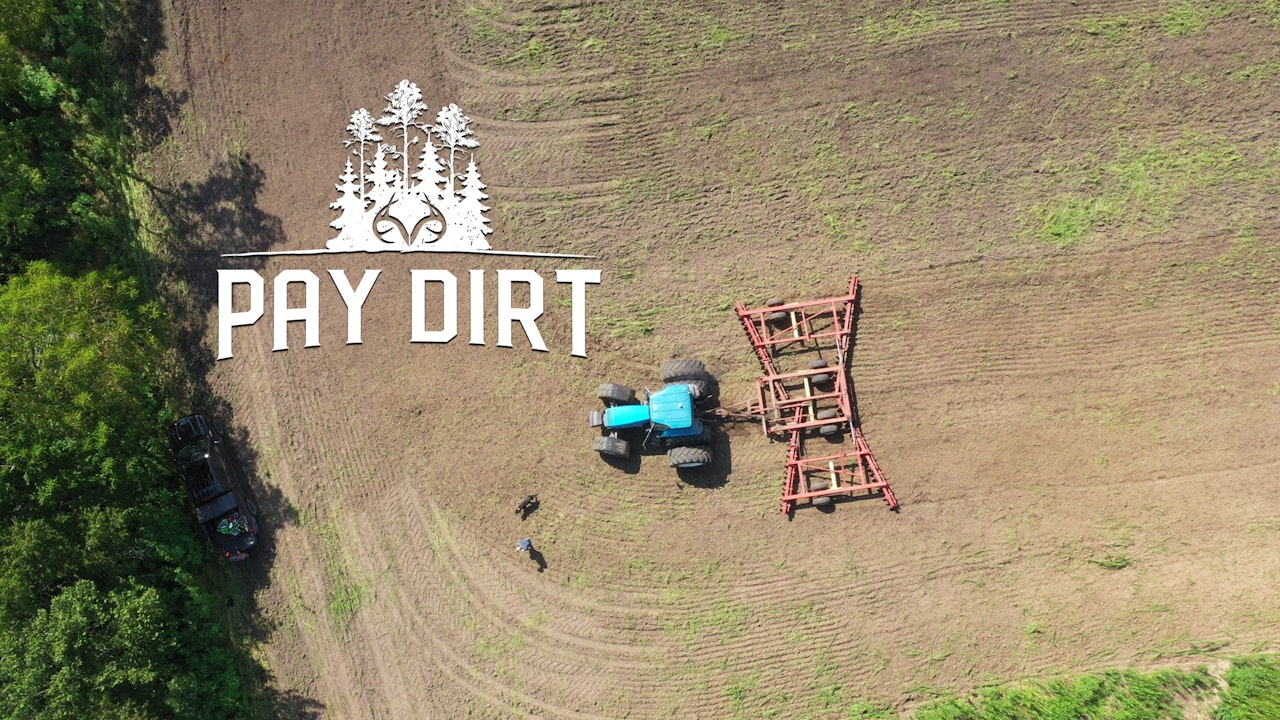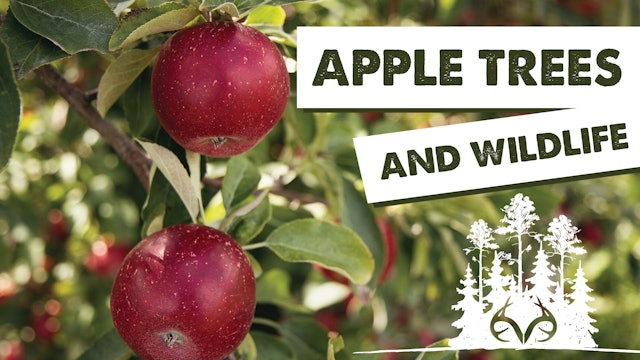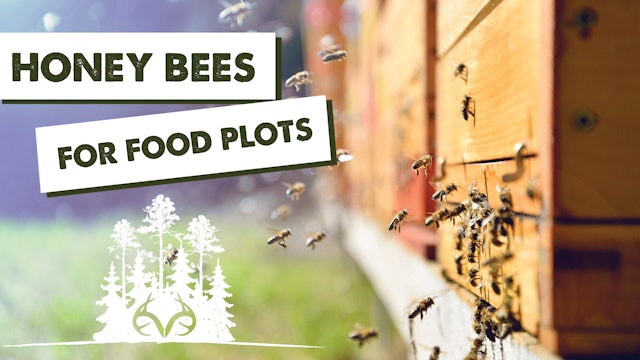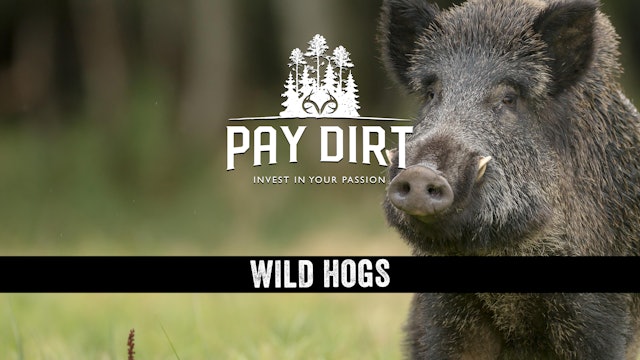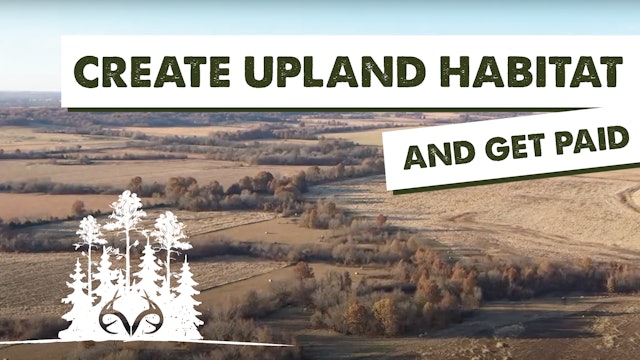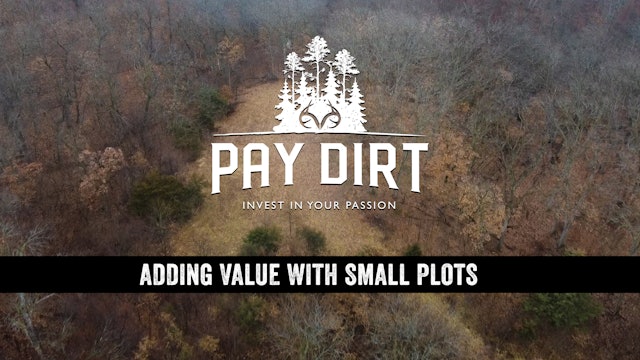Pay Dirt
5 Seasons

Tips from Midwest Whitetail's Bill Winke, Realtree farm manager Roger Culpepper, and more. Your questions. Their answers. Get the most out of your hunting land.
-
Should You Plant Apple Trees for Wildlife? | Pay Dirt
Episode 1
S1.E1: Bill Winke looks into the long-term benefits of planting apple trees for wildlife. This is a critical step in creating year-round food sources. Most fruits peak from August to October, which feeds wildlife and makes for great early season hunting spots, too. Plant fruit trees to add divers...
-
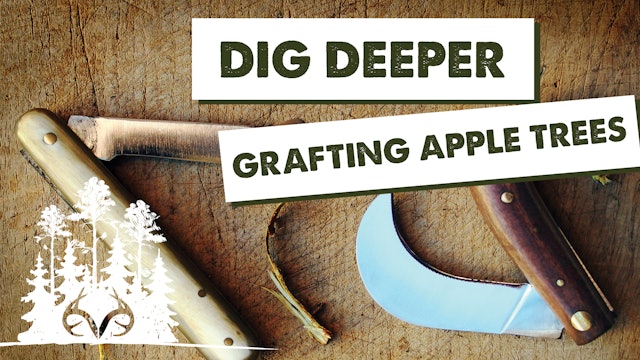 09:11Episode 2
09:11Episode 2Dig Deeper: Grafting Apple Trees
Episode 2
S1.E2: Join Iowa State's Jesse Randall as he demonstrates how to graft together apple tree seedlings, and save a ton of money. This is much more economical than planting trees, and it takes less time for trees to mature than when planting acorns. Use this method to increase the forage on your pro...
-
Will Honey Bees Improve Food Plots?
S1:E3: Realtree Farm Manager Roger Culpepper discusses the benefits of using honey bees to pollinate food plots. Your planted food sources will reap great rewards from the presence of bees. He visits with an expert who knows everything there is to know about these incredibly valuable insects. Rog...
-
 08:29Episode 4
08:29Episode 4Dig Deeper: How To Make Honey
Episode 4
S1.E4: Skeeter Cotton demonstrates the fascinating process that takes pure unfiltered honey and turns it into liquid gold. With a minimal investment of time and money, you can help the environment and see some extra sweet payoff!
-
Economical Hog Trapping Strategies
S1.E5: It's difficult to eradicate wild hogs from your property, but with smart trapping strategies, you can stay mobile, save money, and keep pig numbers in check. Follow this advice to help remove and manage populations. These things are prolific. It requires a strict regimen to maintain low nu...
-
Dig Deeper: Trapping Hogs with Remote Control Traps
Episode 6
S1.E6: Hogs aren't native, and having them on your property will cause your deer, turkeys, small game, browse and mast to suffer. Plus, they'll dig up your food plots. Who wants that? The best way to control hogs is by trapping entire sounders at once, and for that, nothing is more effective than...
-
Poor Man's Food Plots, Plus Benefits of Auctions for Land Sales | Pay Dirt
Episode 7
S1.E11: With just a backpack sprayer and a hand seeder, you can plant a food plot in a hard-to-reach area without breaking ground. Use these tips and tactics to establish great food plots in remote places where large implements won't go. This also works great if you don't have large implements. A...
-
Dig Deeper: Need To Get Rid of Sweetgum Trees? Watch This.
Episode 8
S1.E8: Sweetgum trees are of little value to wildlife, and they grow extremely fast. Roger Culpepper shows how they control sweetgum trees at Realtree Farms.
-
 12:35Episode 9
12:35Episode 93 Ways to Establish Oak Trees
Episode 9
S1.E9: You bought every acre and every acre should produce value. This week, we discuss three methods for establishing oak trees on marginal acres within your property. This isn't a quick job. It takes time and dedication. Follow these tips and procedures to maximize the habitat on your hunting g...
-
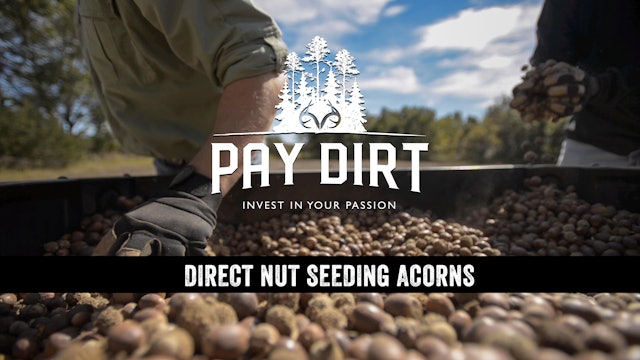 07:18Episode 10
07:18Episode 10Dig Deeper: Planting Oaks from Acorns
Episode 10
S1.E10: Bill Winke takes a look back at a 2007 project, and explains how to establish new oak seedlings from acorns. This is a very beneficial process for wildlife, and it's much cheaper than planting trees. However, it takes time and dedication to bring seedlings to maturation. Here's what you n...
-
 08:31Episode 11
08:31Episode 11How to Select a Killer Food Plot Location
Episode 11
Roger Culpepper has a favorite food plot, called the 185 Field, on Realtree Farms. What makes it so good? It's fertile for one. But it's also secluded, and Culpepper says deer just feel comfortable using it during daylight. And the layout, particularly the topography, is such that you can scout i...
-
Dig Deeper: Saving Food Plots with Portable Irrigation
Episode 12
S1.E12: During a drought year like this one, planting much of anything can be risky, but the success of a hunting season—and the value of a property—can at the same time hinge on quality food plots. Roger Culpepper shows how he uses portable irrigation to save food plots on Realtree Farms.
-
 09:38Episode 13
09:38Episode 13Make Your Land Pay for Itself with Crops
Episode 13
S1.E13: Crop fields produce income and will usually attract more wildlife than fallow fields full of low-value grass. Owen Reigler discusses converting fields to productive ground for corn and soybeans
-
Dig Deeper: How to Convert Fallow Ground and Make Money
Episode 14
S1.E14: Owen Reigler says converting fallow ground can be the best way to improve the ROI on your farm. But there are things to know, like how tough it'll be to clear it, and whether the soil is suitable for planting. Here, Reigler explains the general steps that he's used to be successful.
-
Small Lake Management Tips for Trophy Largemouth Bass | Pay Dirt
Episode 15
S1.E15: If you want a healthy pond, it's important to know what's swimming around. Shocking your lake a couple times per year helps keep tabs on both bass and baitfish populations. Plus, Slade gives tips for prepping your hunting property ahead of the sale, and teases a 223-acre farm listing in K...
-
Dig Deeper: Hybrid Tiger Bass for Small Lakes
Episode 16
S1.E16: Roger and Blair Barbaree pull bass from the lake at Realtree Farm to check their condition and reset the lake's management plan. Plus, they discuss hybrid Tiger bass, which have a Florida-strain's fast-growing tendencies with a northern-strain largemouth's aggressive nature.
-
Establishing Water Sources in Dry Country | Pay Dirt
Episode 17
S1.E17: David Blanton is in Texas, learning about the importance of establishing water sources in arid country. Plus, he learns how grazing cattle can actually benefit wildlife. Finally, Slade gives tips for new buyers on preparing for that first land purchase.
-
How to Get Paid for Creating Upland Habitat Buffer Strips | Pay Dirt
Episode 18
S1.E18: Slade visits with Tondo Waldron, and they look at some CP-33 upland habitat buffer strips. Waldron explains the steps landowners can take to receive federal grant money for maintaining these strips, which provide good travel corridors for whitetails, and excellent ground cover for quail, ...
-
Managing Your Timber for Deer Habitat and Profit | Pay Dirt
Episode 19
S1.E19: David Blanton discusses habitat management via timber improvement with Realtree Land Pro Travis Hamele. New growth after a timber harvest provides outstanding food and cover—while the harvest itself can help pay the note on your land.
-
 08:57Episode 20
08:57Episode 20Cutting Your Pine Forest
Episode 20
S1. E18. We join Realtree Farms' Roger Culpepper as he dives into the process of managing different age classes of pine stands. This is a crucial aspect of properly maintaining habitat and ensuring a healthy forest, and healthy wildlife.
-
 09:27Episode 21
09:27Episode 21Dig Deeper: Benefits of Cutting Timber
Episode 21
S1.E18. Roger Culpepper and Shawn Morman explain how cutting timber on your property is beneficial. Managing a forest is like anything else. If you don't do it properly, things go array. Plus, it doesn't hurt to help the wildlife and make some quality cash, right?
-
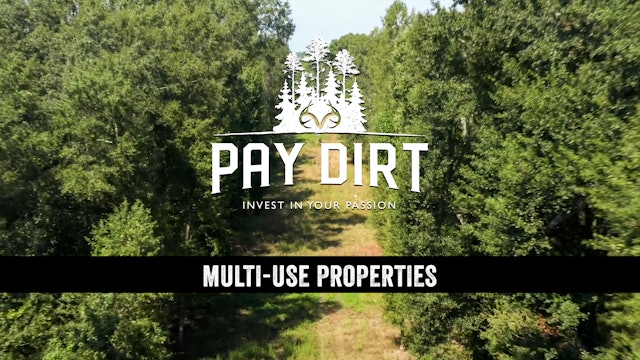 09:28Episode 22
09:28Episode 22Managing Multi-Use Properties | Pay Dirt
Episode 22
S1.E19. Own land? If so, it needs to create value and produce cash. Depending on the tract, it could be crammed with potential, and a property that has many different uses can be extremely beneficial when buying or selling a property.
-
Dig Deeper: How to Select the Best Deer Hunting Property
Episode 23
S1.E20. Bill Winke discusses the top three land features he looks for in a great deer hunting property. Some properties might not check every box, but it's better when they do. Look for the tracts that have everything a deer (and deer hunter) needs. Here is what you need to know.
-
Increasing Property Value with Small Plots | Pay Dirt
Episode 24
S1.E21. Adding small hunting food plots to your recreational farm can really improve its overall value. This is true both now and when it comes time to sell. Learn what you need to know in this episode of Pay Dirt.

